When Charlotte and Donald Molesworth married they politely eschewed the usual range of wedding presents, and suggested instead guests bring “faded velvet curtains and unwanted yew and native hedgerow seedlings”. And it’s on the latter that the backbone of their garden is built. At first glance you’d think this garden had been in the family for generations, probably the result of a team of gardeners’ work and certainly the product of several hard-earned fortunes. Of course, the Molesworths have put their hearts and backs into their garden, but it’s their ingenuity and imagination that has given it its soul.
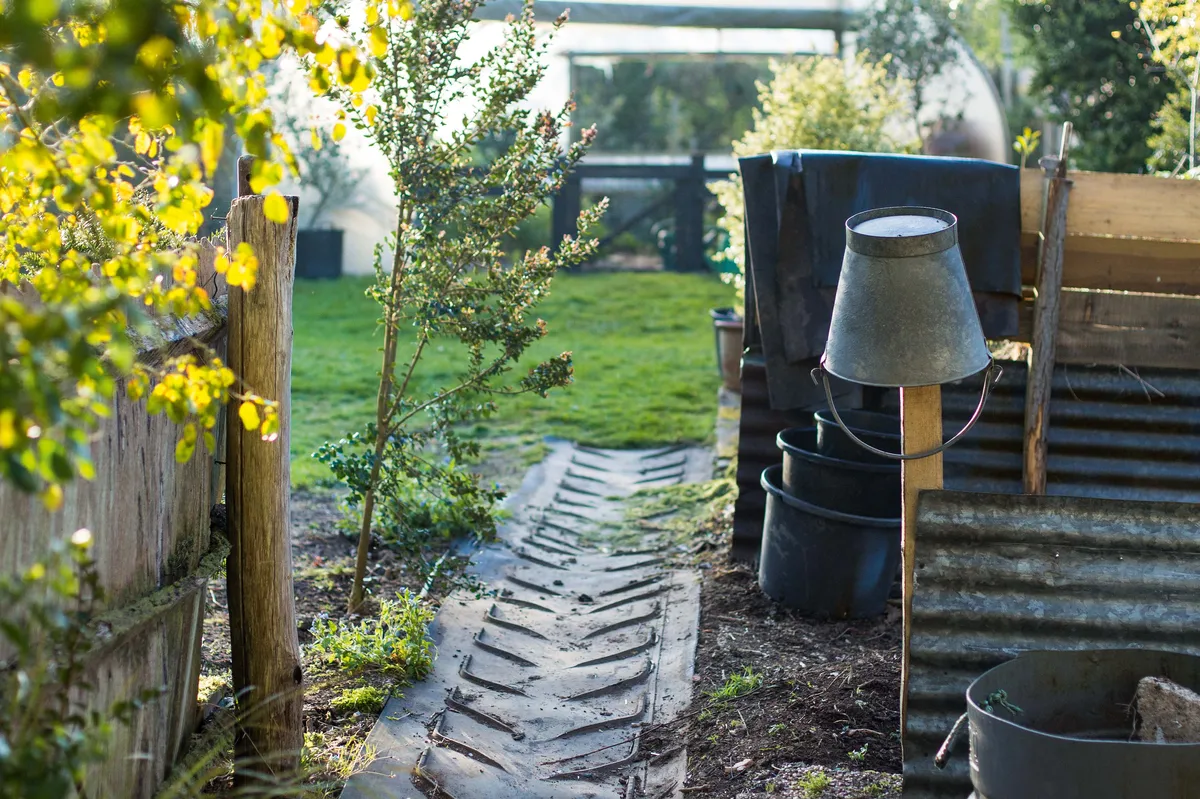
Creating a garden like this on a shoestring is an art. But combine Donald’s background in farming and Charlotte’s career in the arts (she used to work behind the scenes at the Royal Opera House and taught art at the local school) with their shared love of the natural world, and you have the right ingredients for the ideal garden.
Bringing life to their garden over the past 33 years, and furnishing it with unusual pieces has been a pleasure, and Charlotte and Donald still go to farm sales and reclamation yards. Charlotte admits it’s harder to find good pieces nowadays, but advises people to keep an eye out for building conversions and demolition sites that may have old agricultural and industrial pieces, if you see something you like it’s always worth asking about it. Read more for Charlotte's gardening on a budget tips.
Garden ideas on a budget
Using recycled objects in your garden
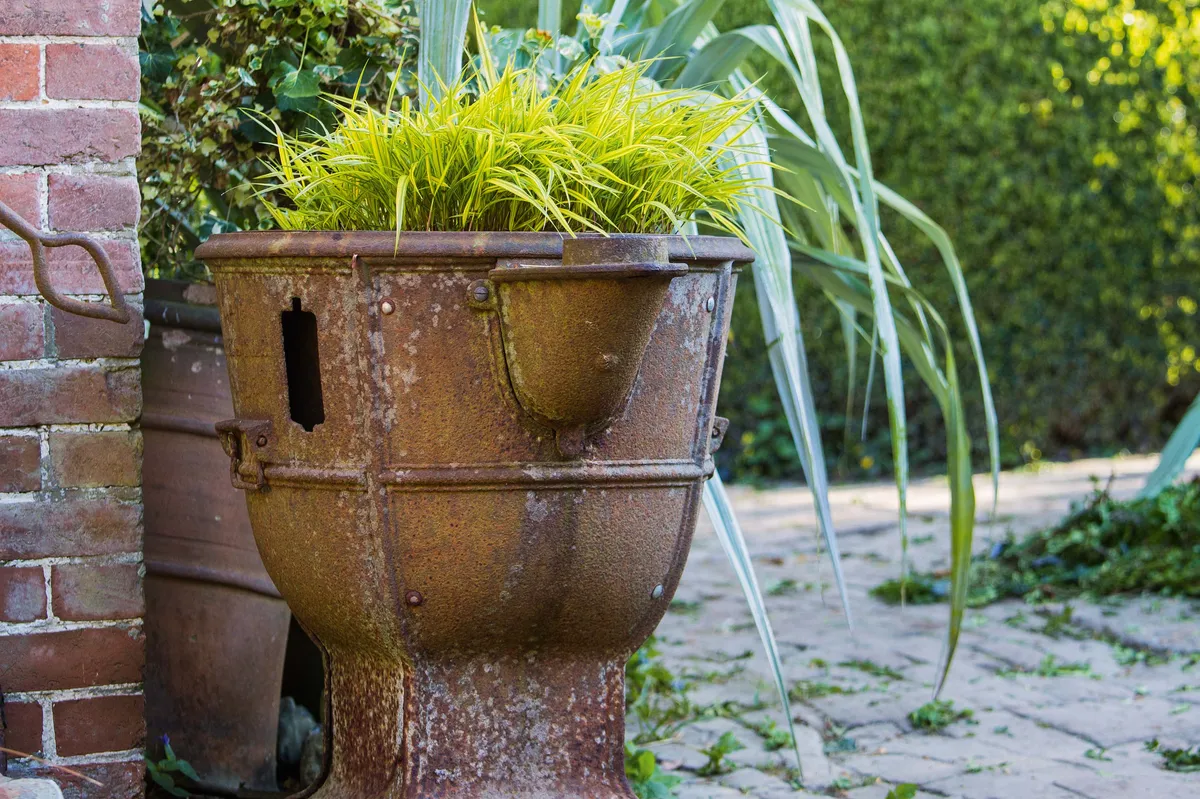
Most people go shopping when they need something. Not the Molesworths. “Buying isn’t the first thing that comes to mind,” says Charlotte. “People pass things on.” With Charlotte’s imagination, plastic citrus pulp barrels are transformed into water butts, and a metal pig swill boiler, found outside the old piggery, is turned into a plant container filled with Hakonechloa macra ‘Aureola’.
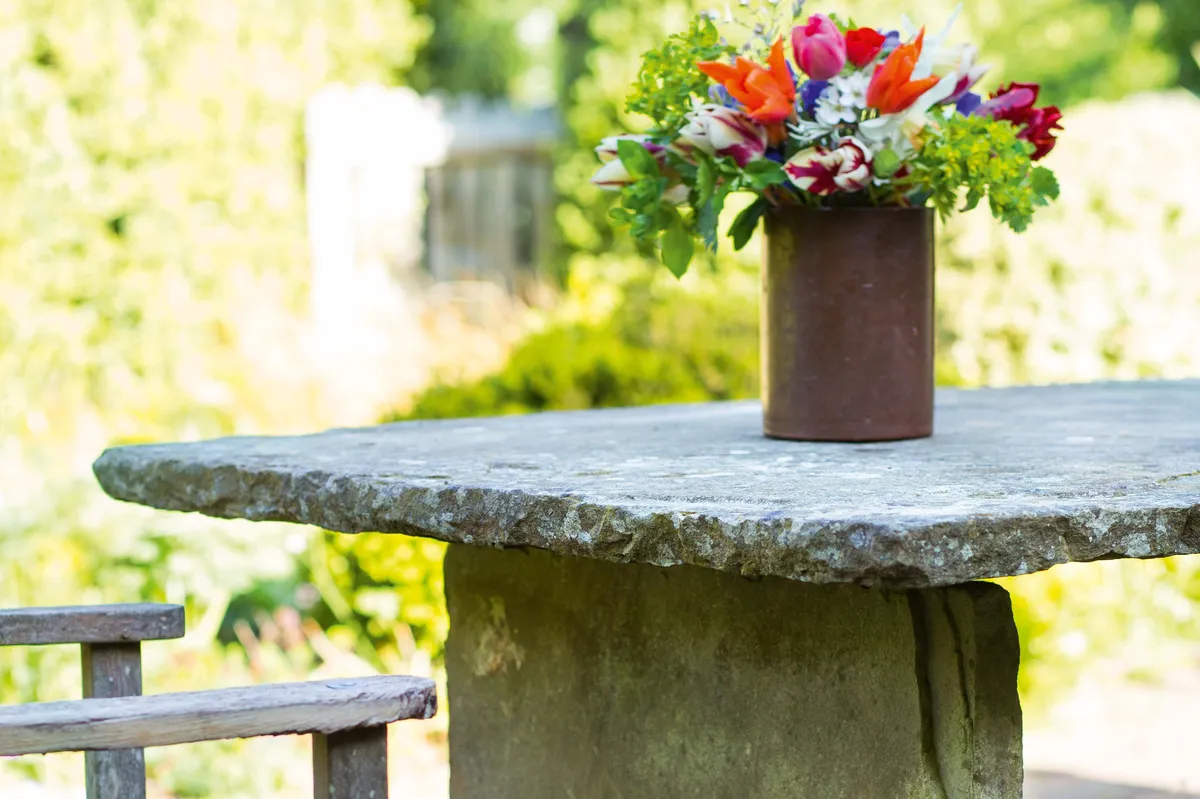
Their slate dining table was stable flooring in a past life and stands on oak gatepost legs. Smaller stone tables are made from reclaimed stone slabs or water tank covers, their bases from York stone flags set on edge.

Donated wooden garden furniture has been repaired with L-shaped metal plates, and sewing machine bases have been used to make a strong base for marble or stone table-tops. Sinks make good planters and galvanised dustbins are just right for potting compost or securely storing chicken feed. Hens are the ultimate recyclers: everything is grist to their mill and then re-appears as eggs or manure. In the Molesworths’ household nothing is wasted: “Someone else may need it if you can’t find an immediate use for it,” says Charlotte. “In some ways, it’s horrifying what people throw away – in others, it’s wonderful.”
Recycling pots in your garden
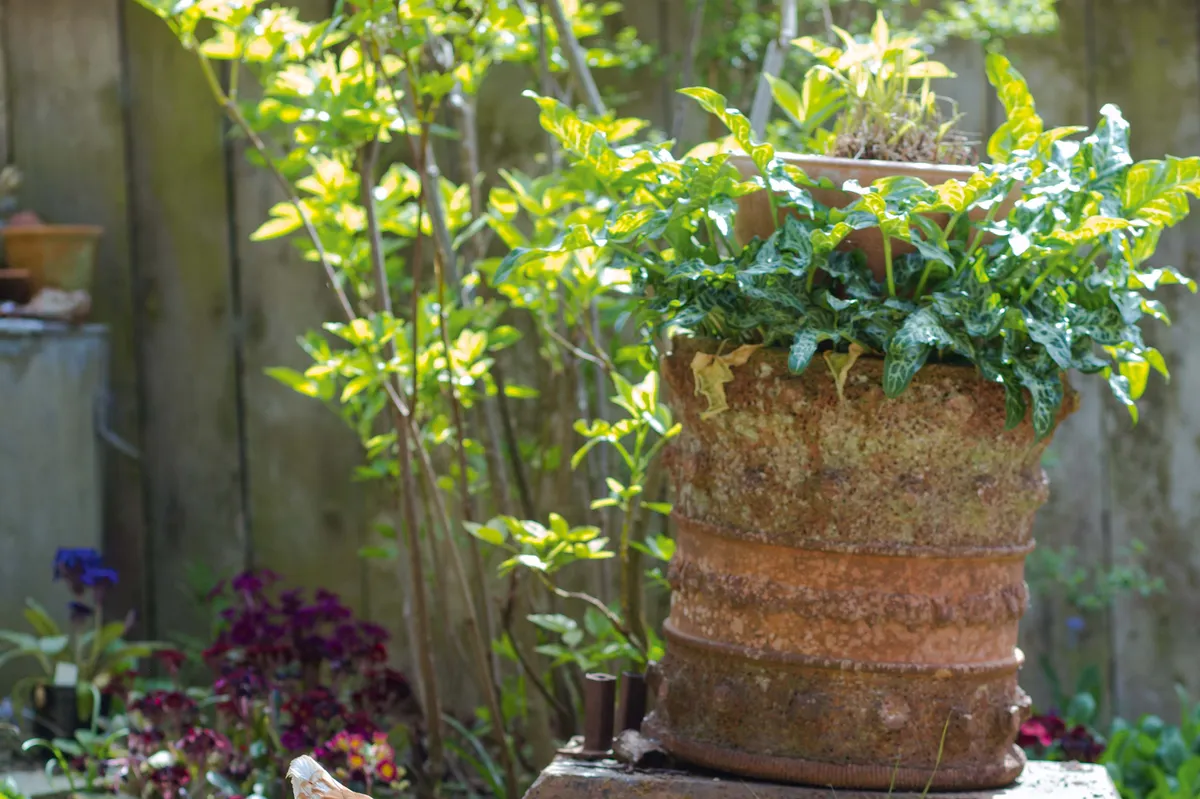
On the terrace sit two large metal animal feeders now used as plant containers. An upturned third supports Charlotte’s favourite terracotta pot, which she found abandoned in the vicar’s garden. “Always ask,” says Charlotte. “People are often delighted to pass on objects they’ve fallen out of love with”. She repaired it with Milliput, a two-part epoxy putty, and filled it with Arum italicum ‘Marmoratum’. Many of the terracotta pots were part of the original kitchen garden’s fixtures and fittings, while chimney pots are used to add height to arrangements.
Making summerhouses on a budget
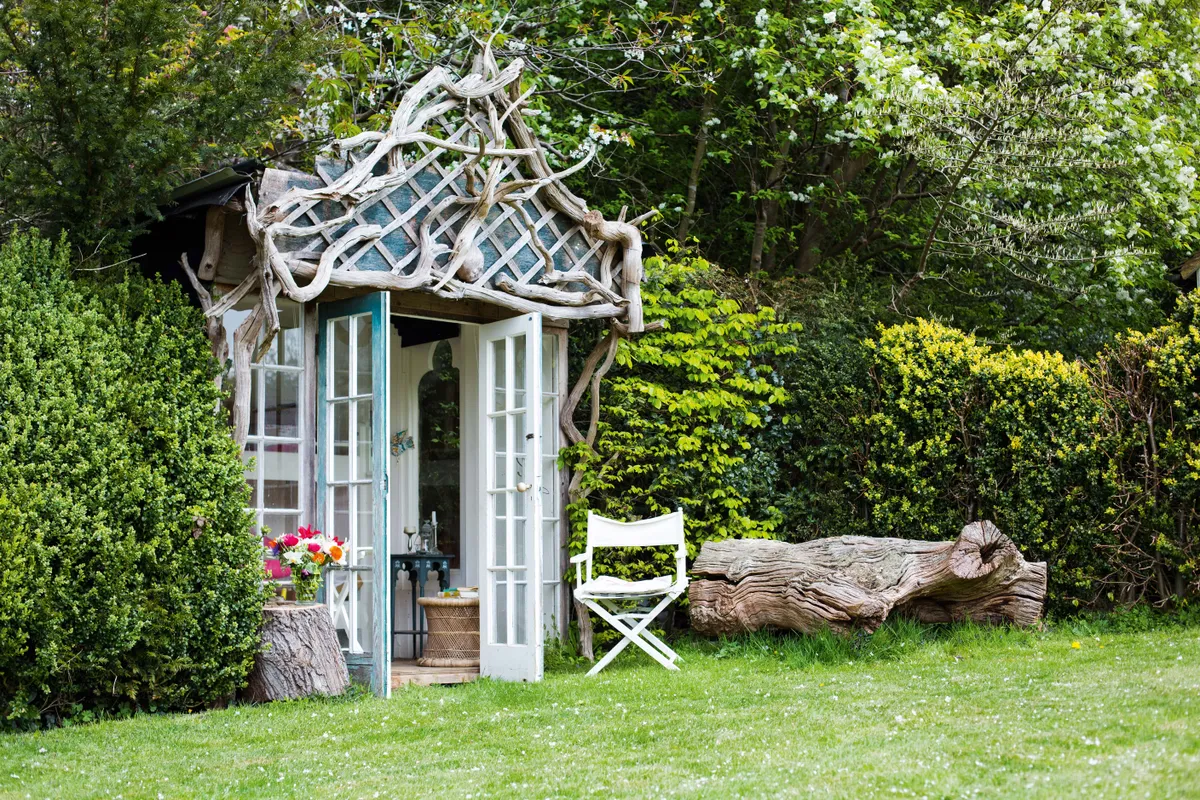
One of the most charming features in the garden started life elsewhere as a swimming pool changing hut and has been transformed into a cottage ornée. The doors came from a friend’s redundant conservatory and Donald cut the ornate fascia base from plywood, then decorated it with stag’s horn oak branches that weather as strong as iron. The Molesworths have a second summerhouse, decorated by Charlotte with painted myrtle leaves, which they reserve for guests who rent their holiday let, the Potting Shed.
Hedging and topiary on a budget
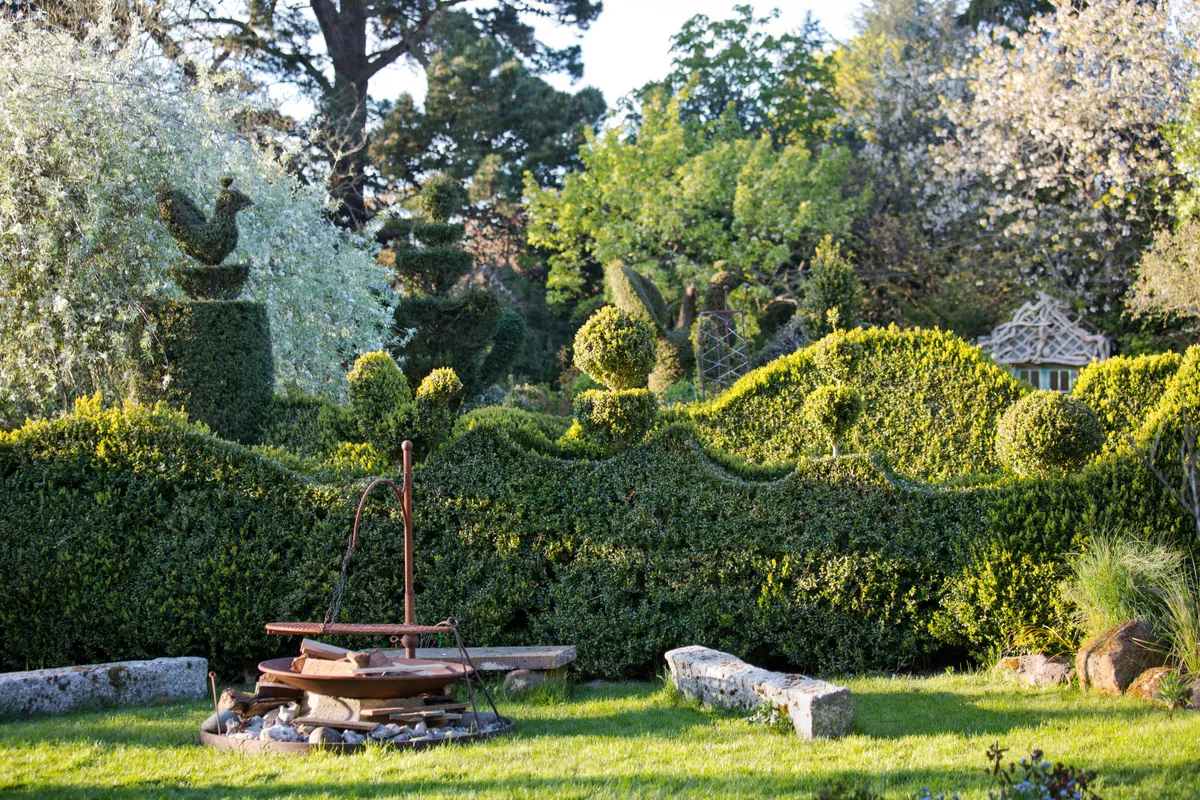
Both Charlotte’s mother and aunt had topiarised plants, so it was natural Charlotte would do the same, starting with the hedges planted out from those wedding-list seedlings and cuttings. The hedges help to subdivide the garden, creating different atmospheres and a feeling of intimacy; they highlight a central vista, cut the wind and create habitat for birds.
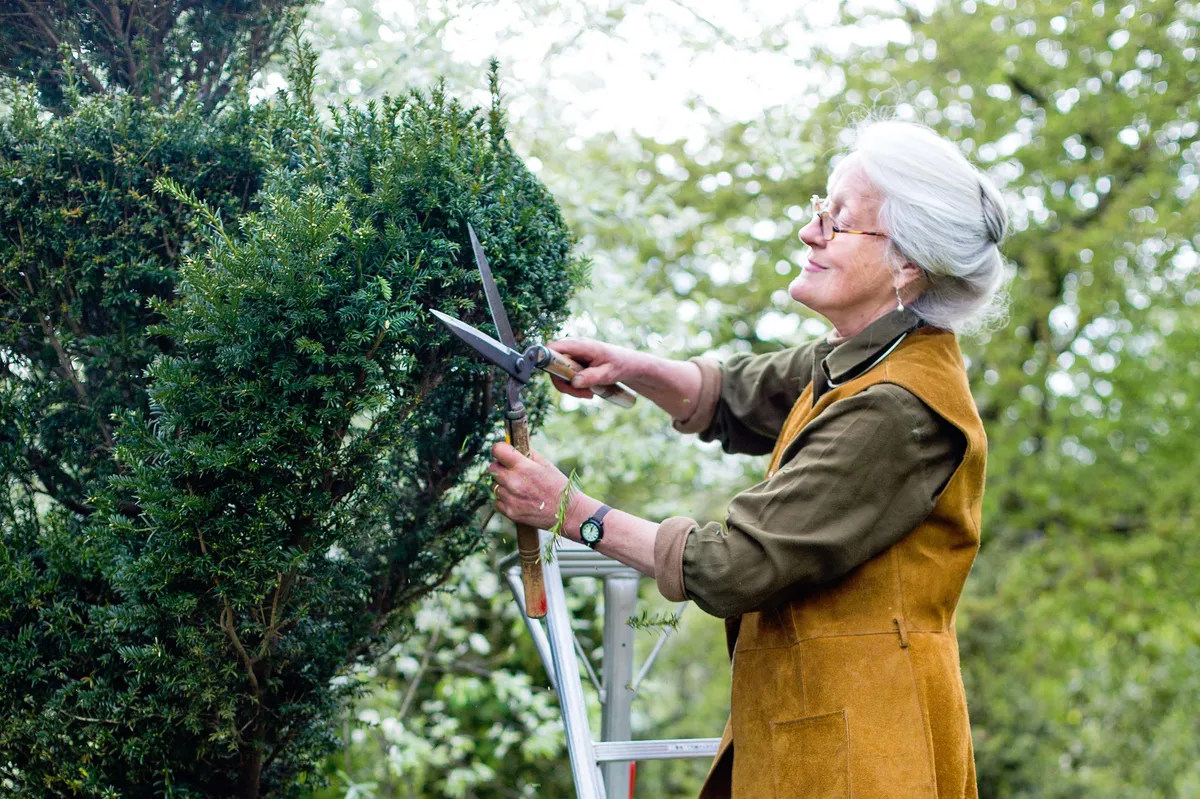
Charlotte sees shapes in the branches and then encourages them with extra support. She believes most hedges define their space after seven years, are pretty good at 14 and have reached their peak aged 21.
Making garden paths and gates using reclaimed materials
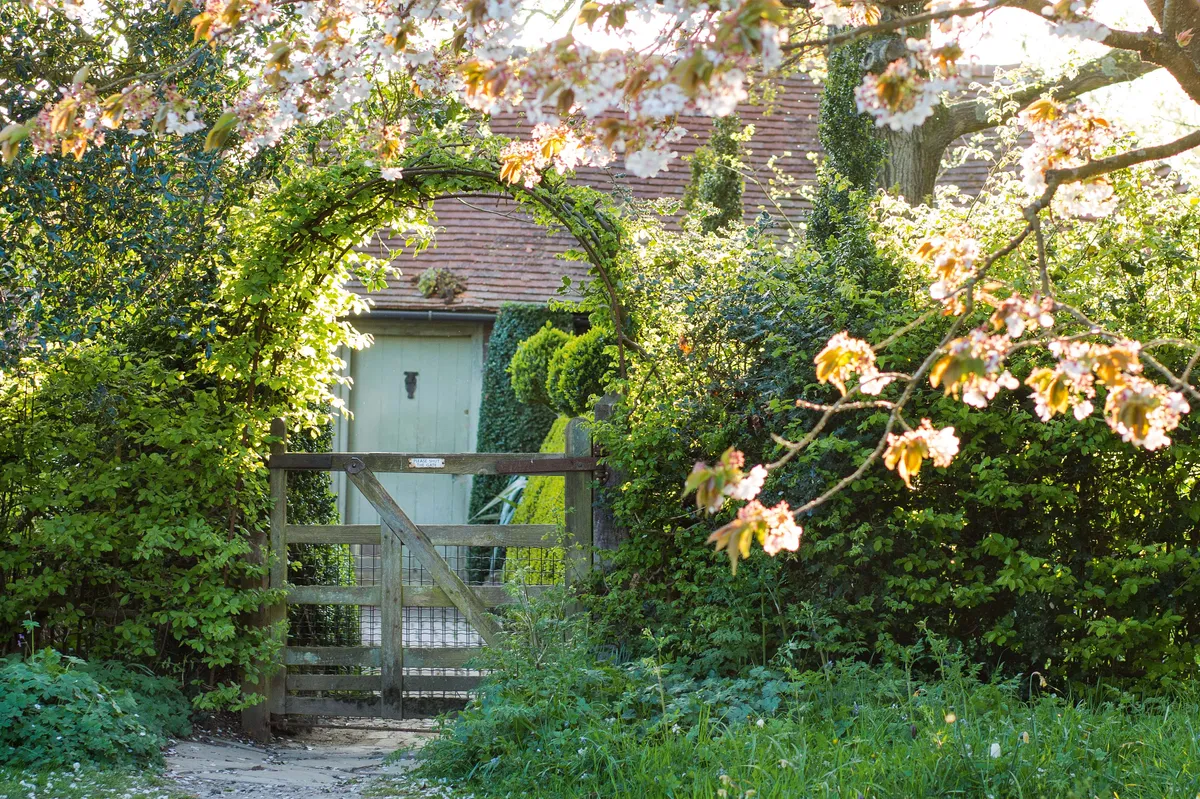
Bricks reclaimed from the garden are used to pave the main path to the front door, but other paths have been laid with new bricks (albeit over-fired, factory seconds) that have aged nicely. In the vegetable garden paths are made from hard-wearing crushed aggregate, topped regularly with ash from the range, while narrower walkways between beds are covered with either a strip of industrial conveyor belt material (see below) or pebble-dashed concrete cladding blocks from a demolition yard, so the soil is never compacted or trodden on.

The garden is on a slope, so it was essential to terrace a flat seating area near the house. Luckily, the old garden was full of large pieces of sandstone that now form the low retaining walls and edge the flower beds. On grassy paths, old stable blocks have been used as stepping stones. Gates form eye-catching features as well as barriers. The larger ones come from farm auctions, some were skip finds and others were found in situ.

The metal arch, en route to the nuttery, was left over from a wedding for which Charlotte arranged the flowers, and now supports hazel whips for scrambling sweet peas. The hazel bushes are coppiced regularly to provide staves for beanpoles, pea sticks, plant supports and kindling.
Fencing ideas on a budget
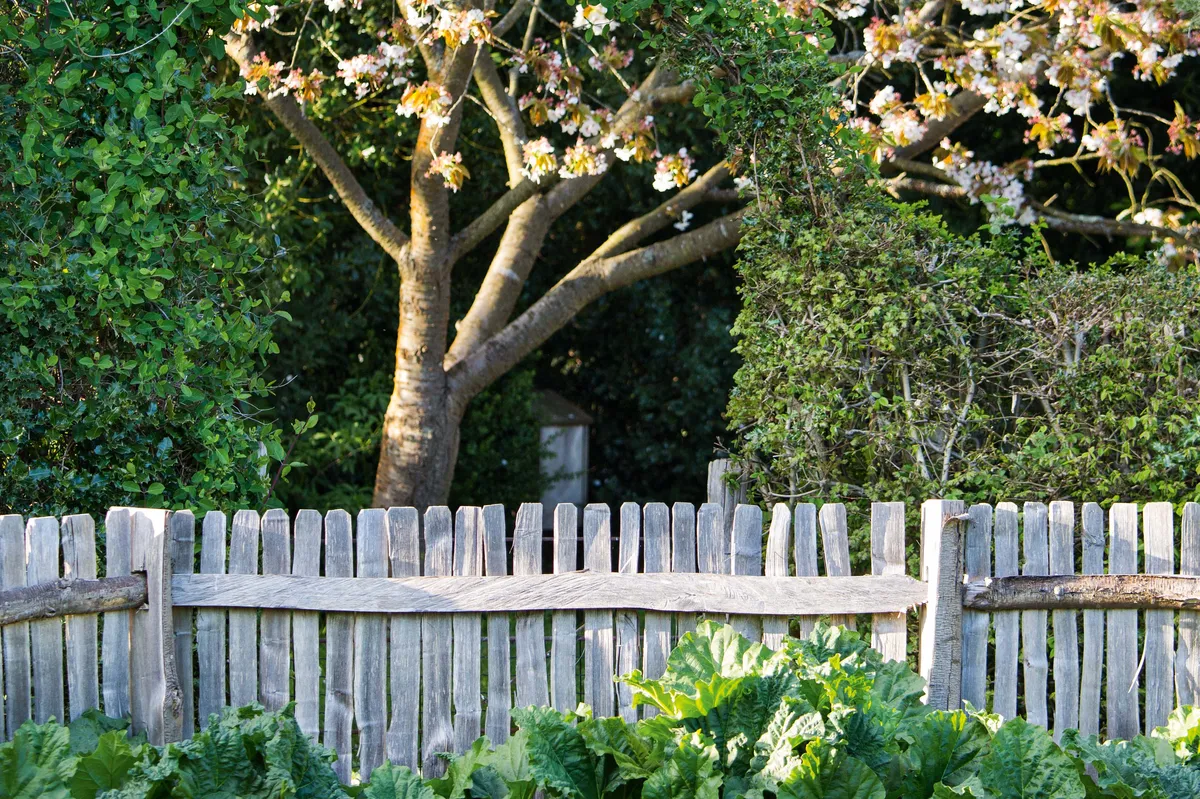
The best wood for fencing is sweet chestnut, which is grown all over Kent. All the lathe fencing in the garden was provided by woodsman Deryck Body, who can split an eight-inch chestnut pole into 32 pales. It’s an ideal barrier against rabbits and helps contain the Molesworths’ small flock of sheep. Deryck nails his fences on chestnut posts and rails, but paling is also available on wire rolls that can be moved around the garden where needed. The nearby Torry Hill Estate grows chestnut wood for fencing, gates and posts.
Seeds, polytunnels and greenhouses on a budget

For the Molesworths, do-it-yourself propagation is what gardening is really about. They collect ripe seeds on dry days and store them in paper bags and old envelopes in a small cupboard that has ventilated drawers lined with wire mesh to deter mice. Any special seeds they don’t swap with friends on garden visits, are given as presents, and excess plants are sold on Open Days.
Daunted by sowing seeds? Read our expert guide to planting seeds.

The couple’s ancient polytunnel was discovered derelict on the side of the A21 and bought for just £30. They’ve buried its metal supports deep into the ground to give it a lower profile. Its entrance has a rabbit-proof gate and, inside, a metal cage, re-enforced with weld mesh, has been installed to stop mice eating precious seedlings, cuttings and divisions.
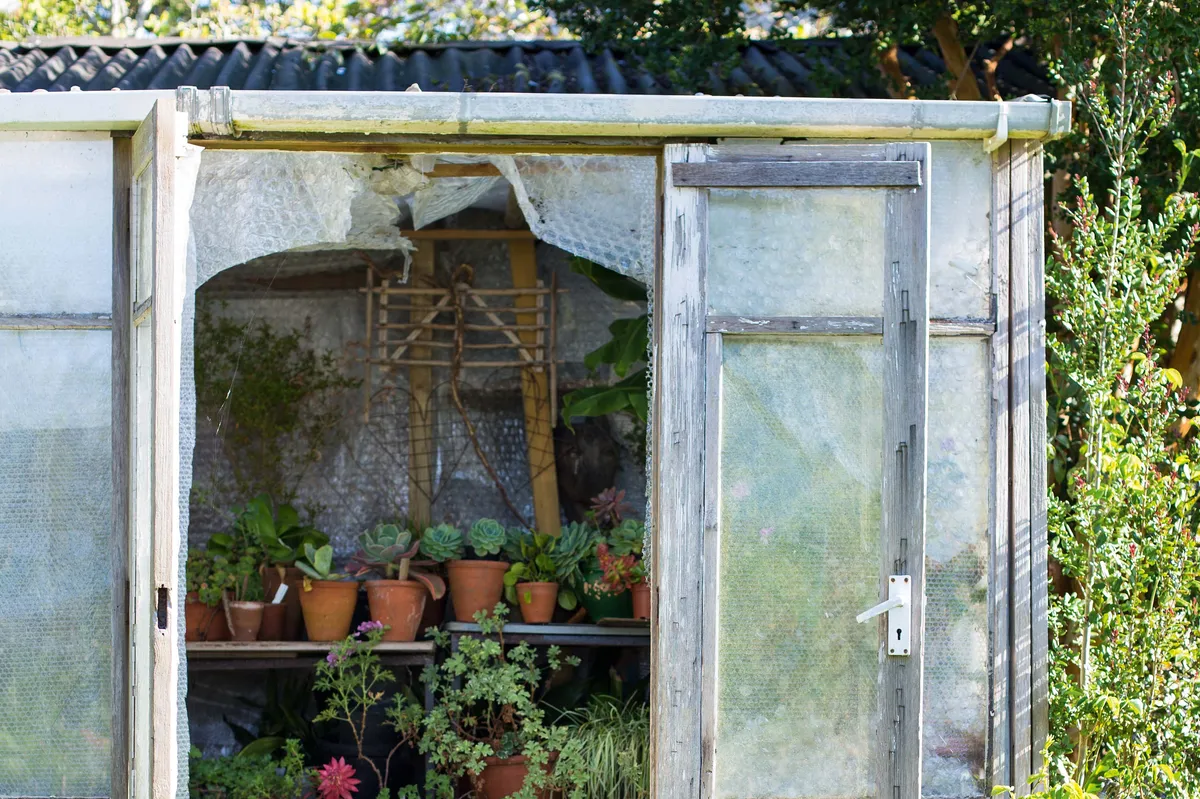
The pretty greenhouse was made from a mishmash of rescued doors and windows, lined with bubble wrap, although it has recently been replaced by a high-spec Keder greenhouse. Another new purchase is a hand-forged trowel from Niwaki, which Charlotte has bought to replace her mother’s treasured trowel, retired after a lifetime’s good use. When Charlotte buys something new she always makes sure it’s the best available; what she considers an heirloom of the future.
Compost is budget gardening

Keen disciples of Maye E Bruce’s 1956 book Common-Sense Compost Making by the Quick Return Method, the Molesworths compost everything – weeds, old clothes, cardboard, plus kitchen, garden and animal waste – in layers. First a green, growing layer, then one of manure (sheep, poultry or donkey), then a brown layer of straw bedding, paper and card. The compost bins, made from wooden pallets and corrugated iron panels (from a skip), are covered with leftover pond liner for a year. Leaf-mould soil conditioner is made in separate bays.
Cuttings and propagating: Plants and flowers in the garden on a budget
How to take box cuttings

Charlotte plants yew seedlings for strong hedges and takes box cuttings wherever she goes so she can try out different species. “Buxus sempervirens is the best all rounder,” she says but adds, “Buxus macrophylla is good for big hedges. Look into a box hedge and you can see the small nodules – all potential new plants on the branches, crying out to root.”
This is Charlotte's method:
- Take cuttings on a dry summer’s day from ripe wood with a heel from two- or three-year-old growth. Trim the end leaves and cuttings will root readily.
- Pop the cuttings around the edge of a 15cm pot. Put eight to a pot, water occasionally and cover with a cut-down plastic bottle. Keep somewhere shady outside for two years in the same pot.
- By the end of their first year, the roots will be white, fleshy and too brittle to separate, but by year two, they will be brown and wiry and easy to tease apart.
- Re-pot into separate 10cm pots and grow on until the root system has recovered sufficiently to be planted outside and used for hedging or topiary.
- Never feed box unless you’re planning to grow it long-term in a container. In other circumstances it will become too lush and be susceptible to disease. Box is a tough, hardy plant.

Useful information
Charlotte generally opens her garden Balmoral Cottage for the National Garden Scheme in April and May.
Her garden is also one of the stops on the Gardens Illustrated Artists' Gardens of Sussex tour (30 May – 2 June 2023).
Don't miss our round up of the best garden furniture